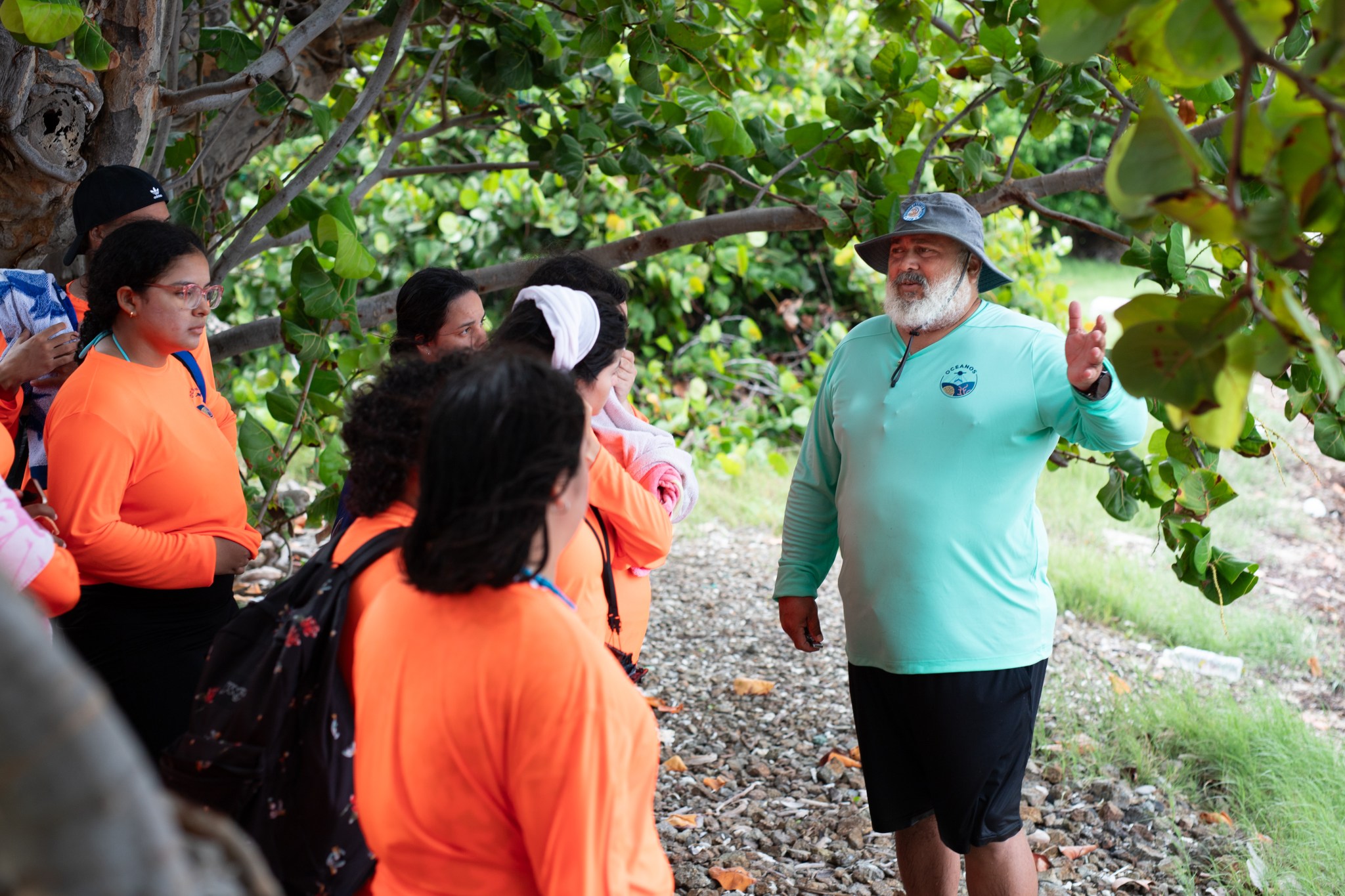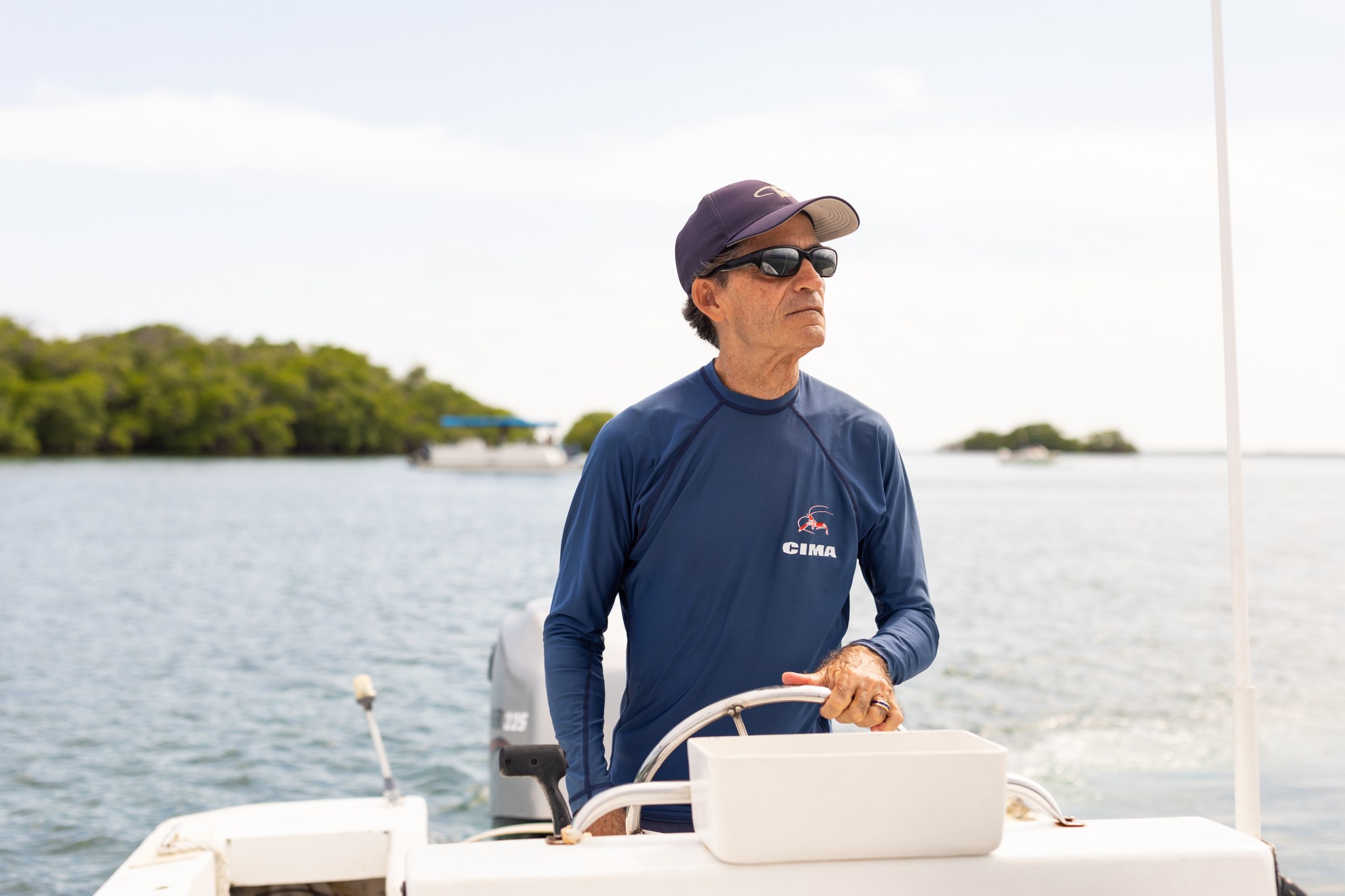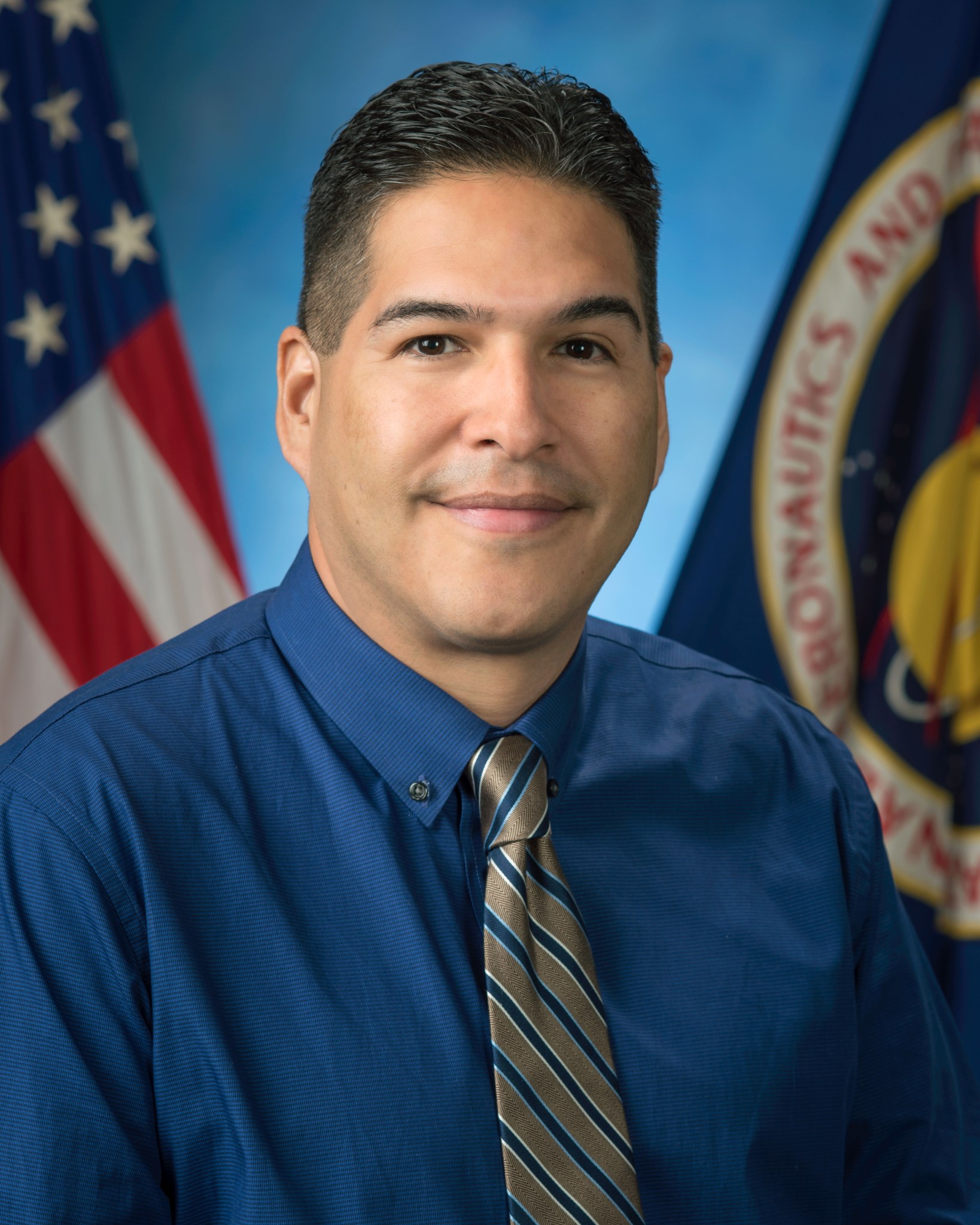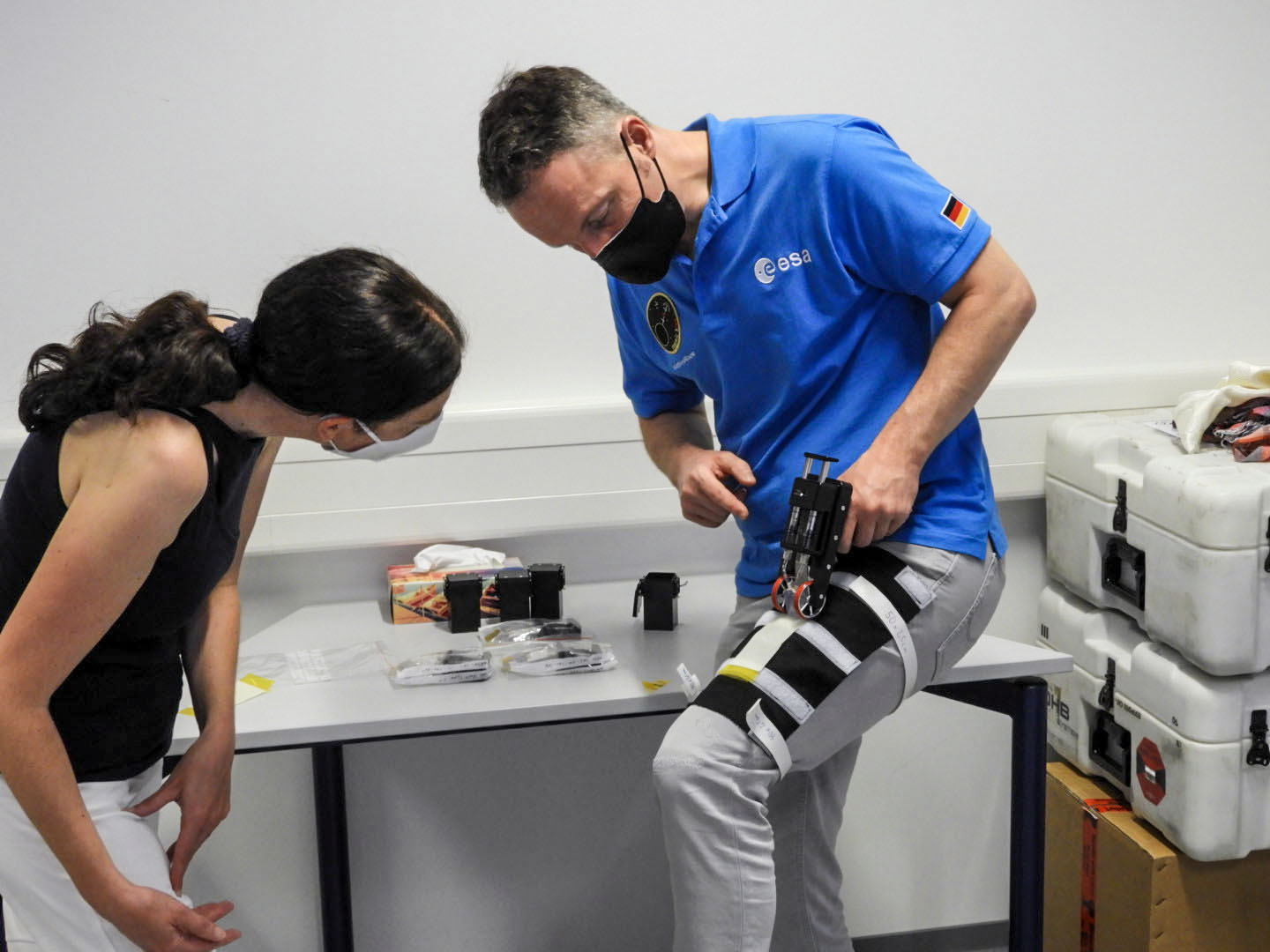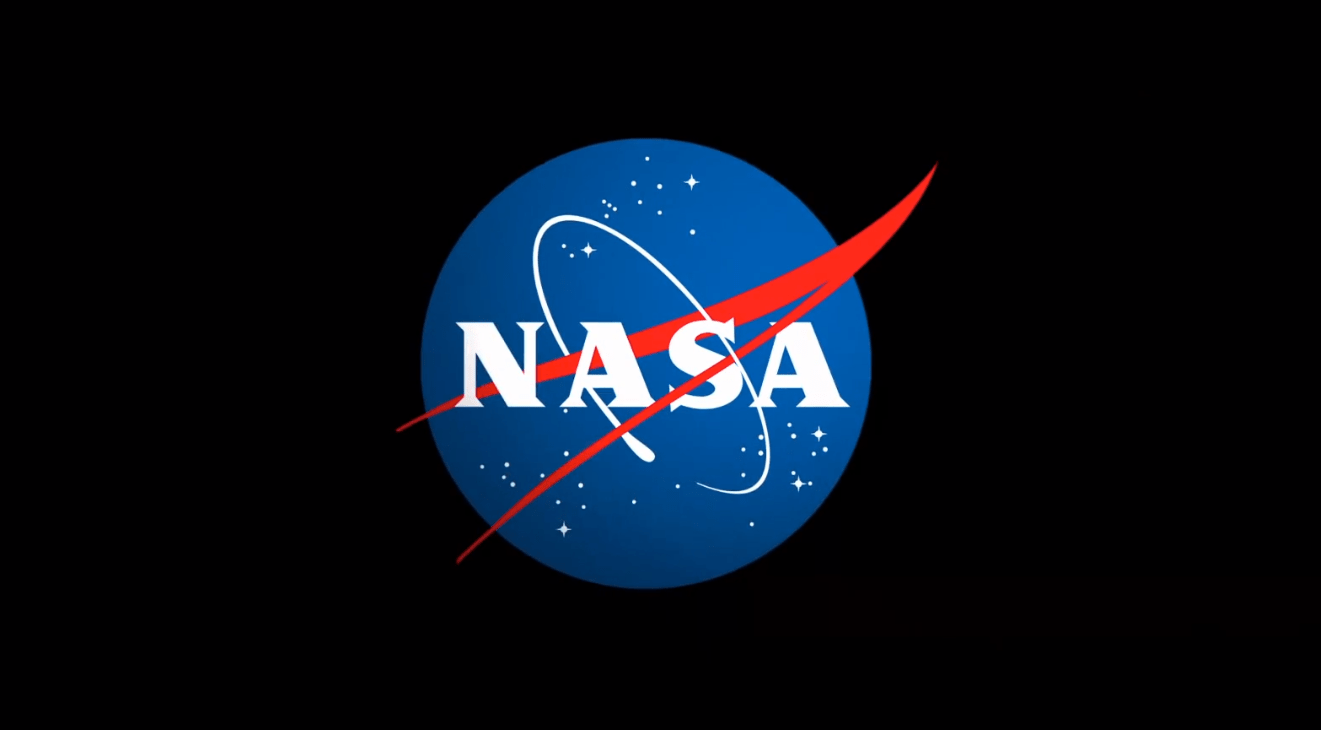4 min read Preparations for Next Moonwalk Simulations Underway (and Underwater) María Fernanda Barbarena-Arias (left), an associate professor of biology and instructor for the OCEANOS internship, stands on the sand of Playa Melones, Culebra Island, during the field work section of the internship. NASA ARC/Milan Loiacono What is your name and your role with OCEANOS? My name is María Fernanda Barbarena-Arias. I am an associate professor of biology at the American University of Puerto Rico, Metropolitan Campus. I am also a co-PI in the OCEANOS project, and an instructor and…
Read MoreTag: General
Interview with OCEANOS Instructor Samuel Suleiman
3 min read Preparations for Next Moonwalk Simulations Underway (and Underwater) Samuel Suleiman, an instructor for the OCEANOS internship, teaches students about sargassum and shore ecology on Culebra Island, Puerto Rico, during the fieldwork section of the project. Suleiman is also the Executive Director of Sociedad Ambiente Marino: a Puerto Rican NGO that works in conservation and coral reef restoration. NASA ARC/Milan Loiacono What is your name and your role with OCEANOS? My name is Samuel Suleiman and I am the Executive Director of Sociedad Ambiente Marino: an NGO in…
Read MoreInterview with OCEANOS Instructor Roy Armstrong
4 min read Preparations for Next Moonwalk Simulations Underway (and Underwater) Roy Armstrong, an instructor for the OCEANOS internship and marine sciences professor, pilots a small boat around the cays off the coast of La Parguera, Puerto Rico. NASA ARC/Milan Loiacono What is your name and your role with OCEANOS? My name is Ray Armstrong and I am a professor in the Department of Marine Sciences of the University of Puerto Rico. I came to be involved in OCEANOS because my ex-student and good friend Juan Torres-Perez, who works at…
Read MoreNASA Ames Astrogram – September/October 2024
TIME Recognizes the Advanced Composite Solar Sail System In October, the Advanced Composite Solar Sail System a project managed at NASA Ames, was recognized by TIME Magazine as a “Top Invention of 2024”! TIME Magazine also recognized two other NASA missions this year: Europa Clipper, and the Deep Space Optical Communications experiment. The Advanced Composite Solar Sail System is a demonstration of technologies that enable spacecraft to “sail on sunlight,” using solar radiation for propulsion. Results from this mission could provide an alternative to chemical and electric propulsion systems and guide the…
Read MoreOral History with Stephen G. Jurczyk, 1962 – 2023
1 Min Read Oral History with Stephen G. Jurczyk, 1962 – 2023 NASA Acting Administrator Stephen G. Jurczyk Credits: NASA Steve Jurczyk’s NASA career began in 1988 at Langley Research Center as an engineer in the Electronic Systems Branch. During his time at Langley, he served in other roles, including director of engineering and director of research and technology. Jurczyk was named as director of Langley in 2014, then in 2015 he left Langley to serve as the associate administrator for the Space Technology Mission Directorate at NASA Headquarters. He…
Read MoreOral History with Mary L. Cleave, 1947 – 2023
1 Min Read Oral History with Mary L. Cleave, 1947 – 2023 61B-21-008 (26 Nov-1 Dec 1985) —The STS 61-B crew on the flight deck of the earth-orbiting Atlantis. Left to right, back row, are astronauts Jerry L. Ross, Brewster Shaw Jr., Mary L. Cleave, and Bryan D. O'Connor; and payload specialist Rodolfo Neri. Front row, left to right, payload specialist Charles D. Walker and astronaut Sherwood C. Spring. A veteran of two space flights, Dr. Cleave served as a mission specialist on STS-61B and STS-30. She went on to…
Read MoreBeyond the Console: Kenneth Attocknie’s Mission to Bridge Cultures at NASA
From the Mission Control Center to community celebrations, Kenneth Attocknie blends safety expertise with a commitment to cultural connection. For the past 25 years at NASA, Attocknie has dedicated his career to safeguarding the International Space Station and supporting real-time mission operations at Johnson Space Center in Houston. As a principal safety engineer in the Safety and Mission Assurance Directorate, Attocknie ensures the safe operation of the space station’s environmental control and life support system. This system is vital for maintaining the life-sustaining environment aboard the orbiting laboratory— a critical…
Read MoreStation Science Top News: Nov. 1, 2024
Bioprinted patches could help wounds heal Researchers successfully demonstrated the function of a handheld bioprinter that could provide a simple and effective way to treat wounds in space using human skin cells. Crews could use this technology to treat their own injuries and protect crew health and mission success in the future. Spaceflight can affect how wounds heal. The Bioprint FirstAid device tested a process for bioprinting a patch to cover a wound and accelerate healing. In the future, a crew member’s own cells may be used to create personalized…
Read MoreNASA Awards Contract for Refuse and Recycling Services
Credit: NASA NASA has awarded the Custodial and Refuse/Recycle Services contract to Ahtna Integrated Services LLC of Anchorage, Alaska, to provide trash, waste, and recycling services at the agency’s Ames Research Center in California’s Silicon Valley. This is a hybrid contract that includes a firm-fixed-price and an indefinite-delivery/indefinite-quantity portion. The period of performance begins Friday, Nov. 1, with a 60-day phase-in period, followed by a one-year base period, and options to extend performance through November 2029. This contract has a maximum potential value of approximately $24 million. Under this contract, the…
Read MoreStation Nation: Meet Carlos Fontanot, the Imagery Manager Leaving a Legacy of Visual Storytelling
Born and raised in Mexico City, Carlos Fontanot has dedicated 34 years to NASA. He supports the International Space Station Mission Integration and Operations Office, ensuring that high-quality imagery enhances mission objectives and operations. Fontanot is known for conceiving and leading the High Definition Earth Viewing (HDEV) project, which has brought stunning live visuals of Earth to millions around the globe. As he approaches his well-deserved retirement, we are excited to spotlight Fontanot’s remarkable career, celebrating his contributions to NASA and the lasting impact he has made on the agency’s…
Read More
